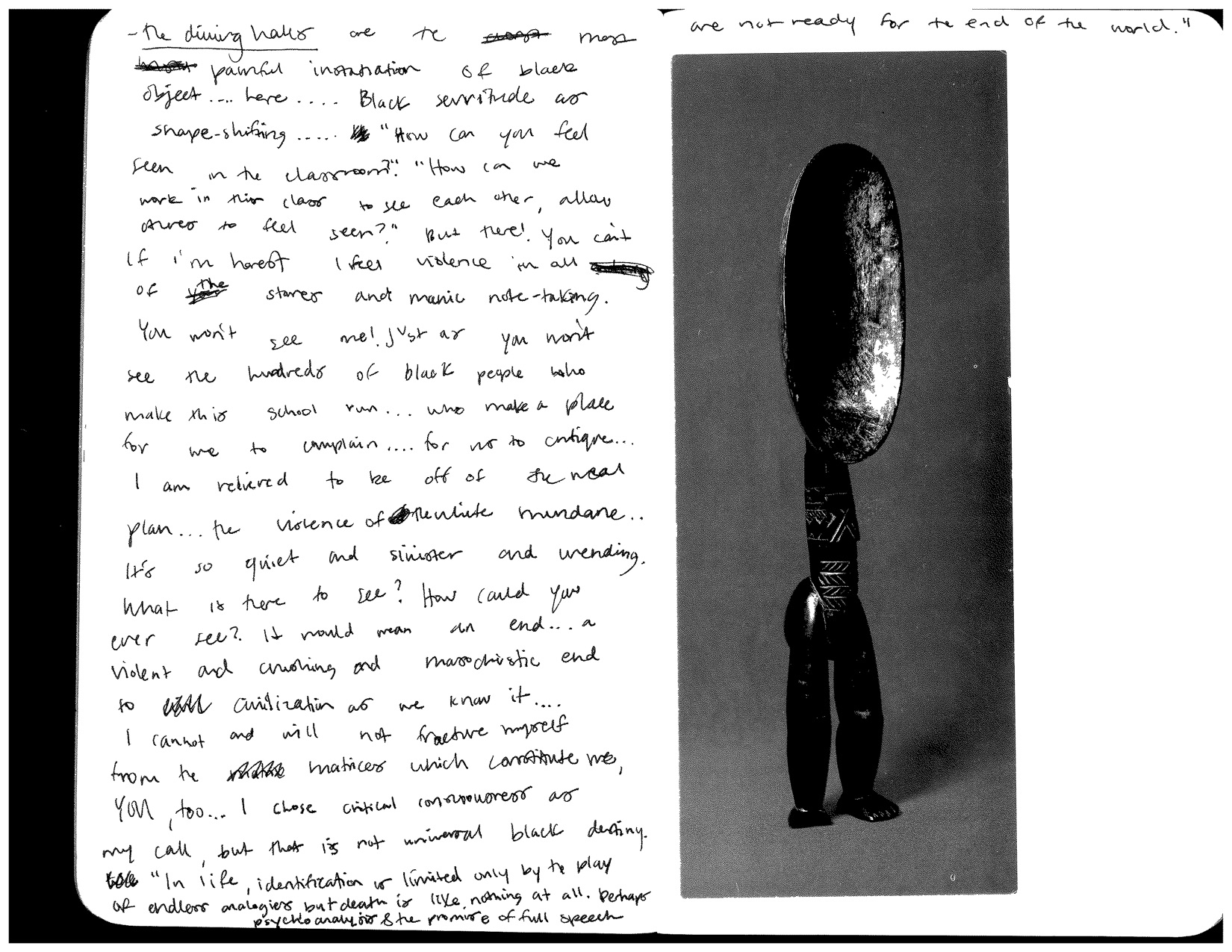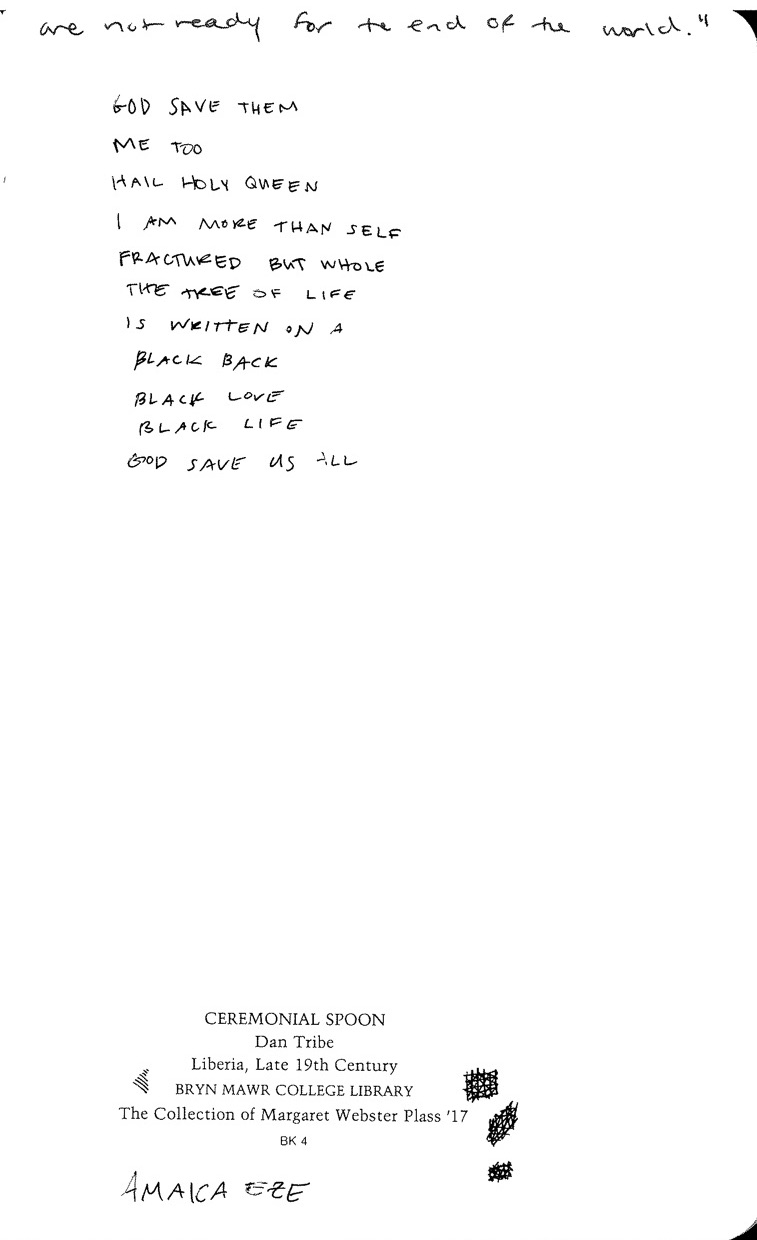IV
By bluishSeptember 27, 2016 - 22:42



Serendip is an independent site partnering with faculty at multiple colleges and universities around the world. Happy exploring!




Living in a dorm is a funky thing. It's a weird quasi-freedom where you don't live with your parents but you also don't really live alone; someone else cooks your meals, someone else cleans the bathrooms, you only occupy one room, and you live with at least 100 other students. (And the people who clean the dorms, who cook the food, who keep the college running are majority people of color.

This last Tuesday, my friend, who I will refer to as Elizabeth, who is bi-racial (Afro-Caribbean and Caucasian) called me and said, “Dude. My back’s really in a lot of pain. You know I’ve had back pain in the past and I’m worried it’s starting again.”
“Wait. What happened?” I responded.
“Well… I slipped and fell earlier and my back was in excruciating pain, so I went to the health center and the person I saw there told me there was nothing she could do. She referred me to the hospital. Can you go with me?”
“Of course love. Do you need to go now? I’m so sorry,” I replied.

"You think your pain and your heartbreak are unprecedented in the history of the world, but then you read. It was books that taught me the things that tormented me the most were the very things that connected me with all the people who were alive and who had ever been alive. I went into the 130th Street Library at least three or four times a week and I read everything there, I mean, every single book in that library. In some blind and instinctive way, I knew that what was happening in those books was also happening all around me and I was trying to make a connection between the books and the life I saw and the life I lived. I knew I was Black, of course, but I also knew I was smart.

After class today, I've been thinking a lot about the disconnect between multiculturalism as an educational movement and an actual acknowledgment/discussion of structural racism (like we were describing for our theoretical fifth graders). Multiculturalism assumes that restructering our curriculums to include multiple narratives is enough to enlighten students - expanding your syllabus from Shakespeare to Shakespeare AND Alice Walker; teaching not just Europe in "world history" but Africa, Asia, and (pre-contact) America as well. And while multiculturism makes some strides, allowing students of color to see themselves in these narratives, it doesn't name the structures at work that excluded them in the first place.

This summer I went with my parents to Vancouver to celebrate my brother’s college graduation. One day, we decided to go to Vancouver Island and have lunch outside of the Farmer’s Market. It was a sunny day and there were children playing and running around the tables where people were devouring salmon, crab, lobster, turkey, and any of a variety of vibrant, fully juicy fruits. The indoor market had been rumbling with bargains- trying to persuade vendors that their grown produce, hand-crafted lotions, clothing, and jewelry was not worth what they had been asking. That their time, sweat, energy of crafting their land into purchasable goods were not were the price they were asking.